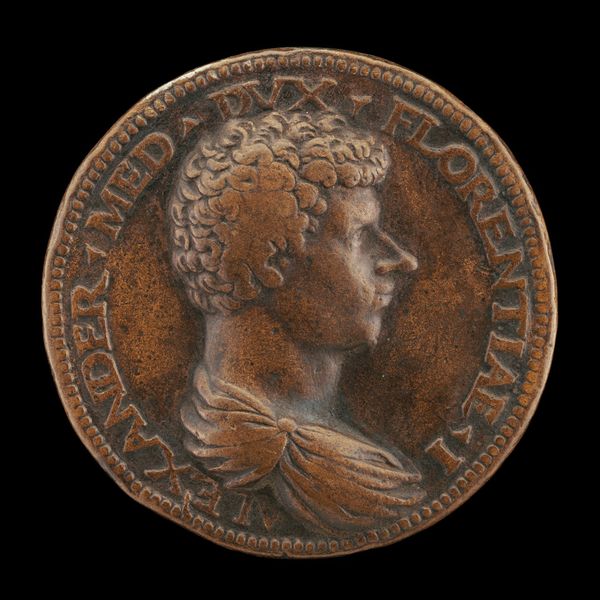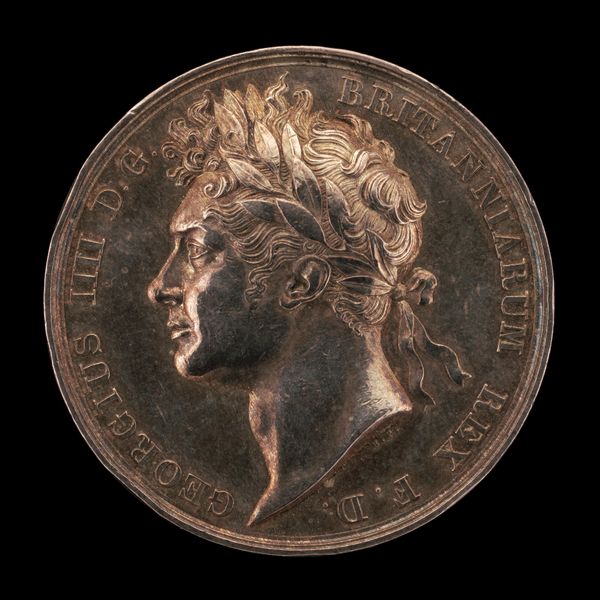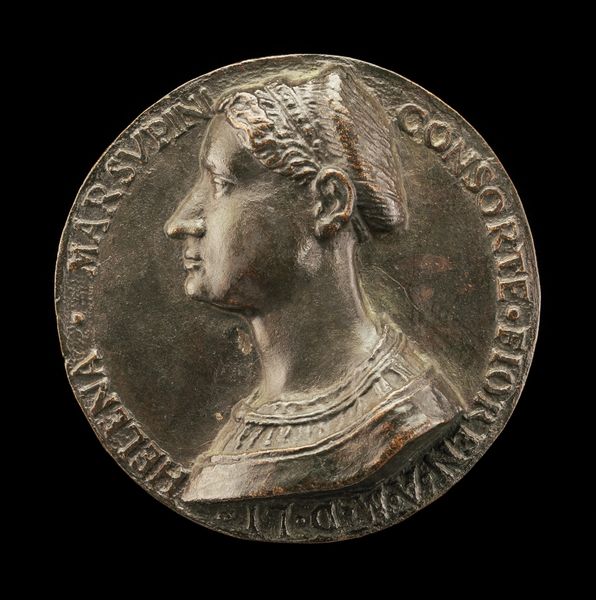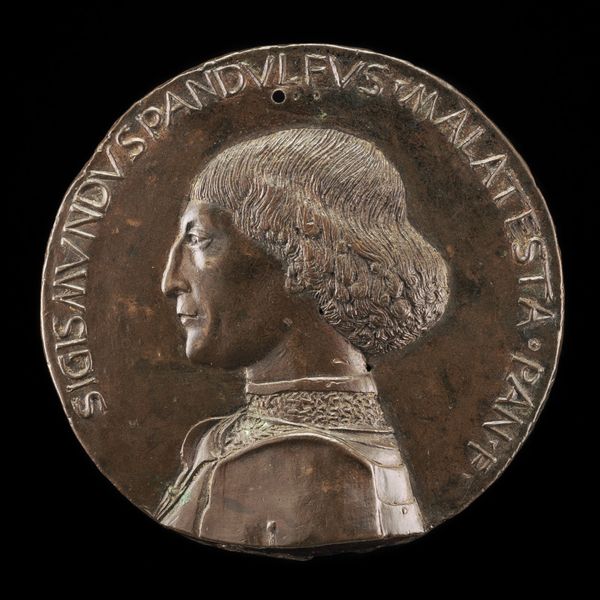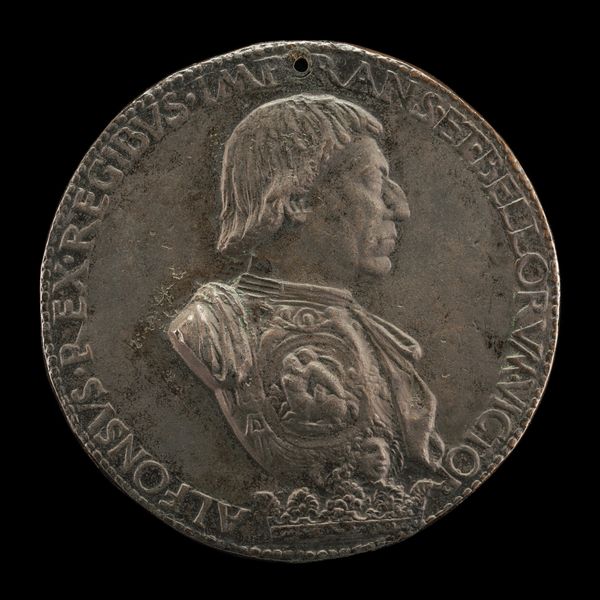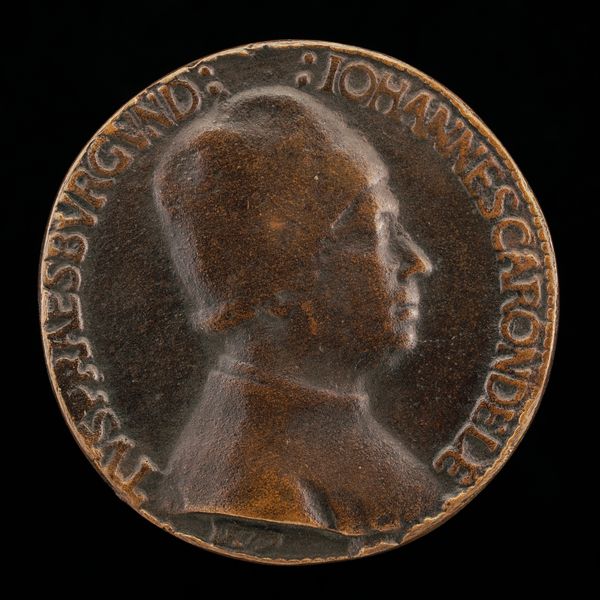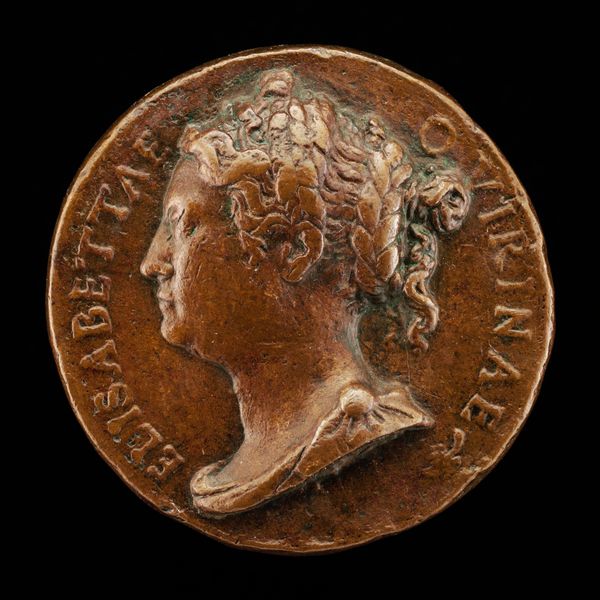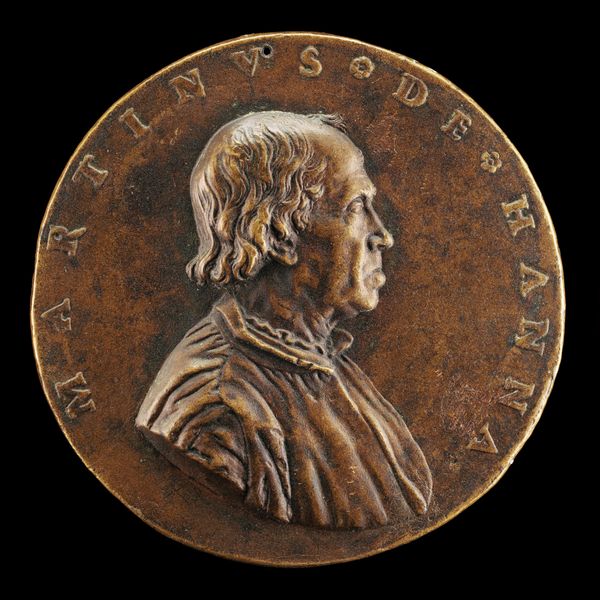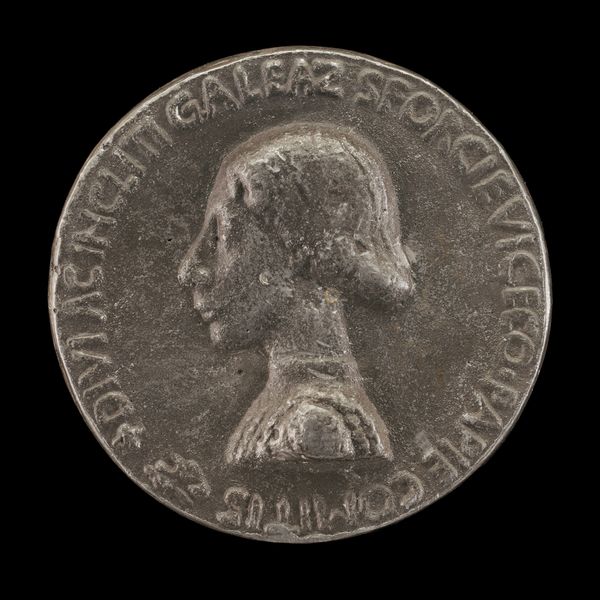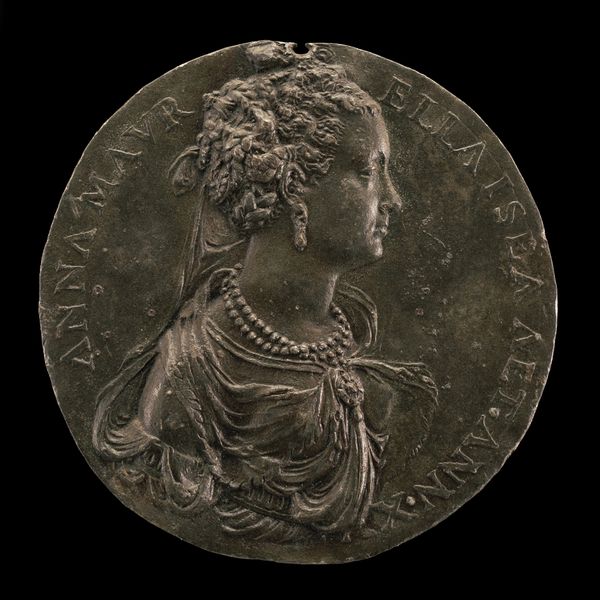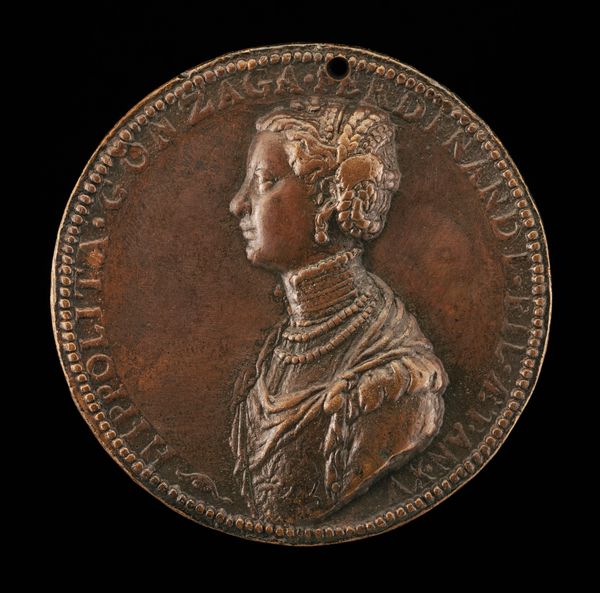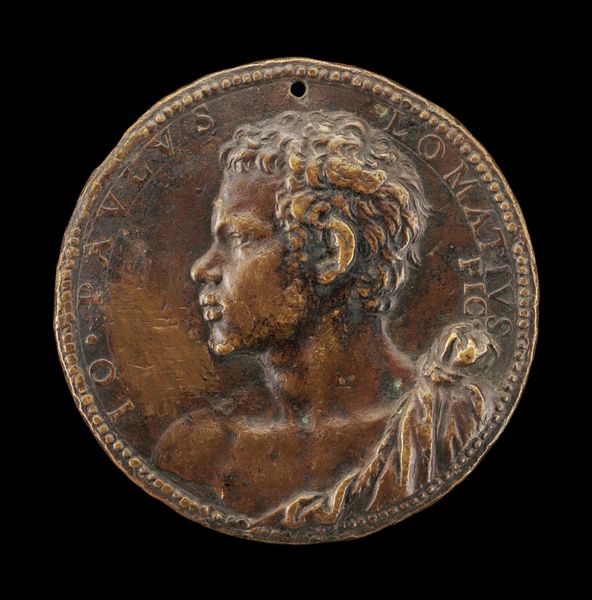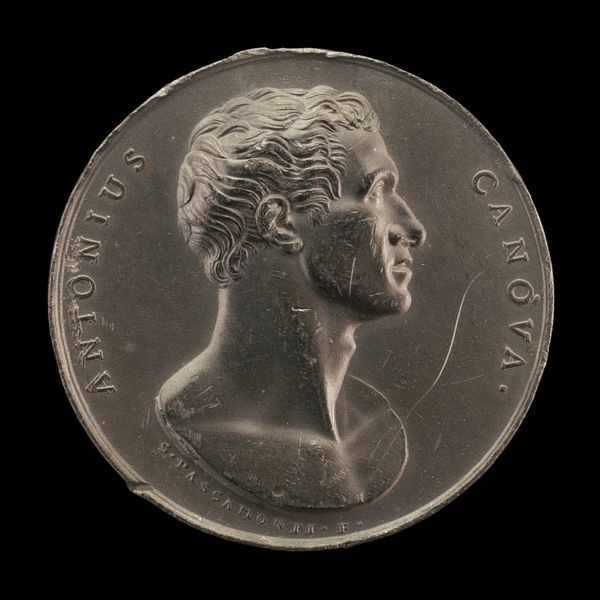![Leone Battista Alberti, 1404-1472, Architect and Writer on Art and Science [obverse] by Matteo de' Pasti](/_next/image?url=https%3A%2F%2Fd2w8kbdekdi1gv.cloudfront.net%2FeyJidWNrZXQiOiAiYXJ0ZXJhLWltYWdlcy1idWNrZXQiLCAia2V5IjogImFydHdvcmtzLzhjNzE5ZDMxLTEwZDgtNDZhOS05Mzc1LTU1MTJkNjVmOWU5MC84YzcxOWQzMS0xMGQ4LTQ2YTktOTM3NS01NTEyZDY1ZjllOTBfZnVsbC5qcGciLCAiZWRpdHMiOiB7InJlc2l6ZSI6IHsid2lkdGgiOiAxOTIwLCAiaGVpZ2h0IjogMTkyMCwgImZpdCI6ICJpbnNpZGUifX19&w=3840&q=75)
Leone Battista Alberti, 1404-1472, Architect and Writer on Art and Science [obverse] 1446 - 1450
0:00
0:00
metal, relief, bronze, sculpture
#
portrait
#
metal
#
sculpture
#
relief
#
bronze
#
sculpture
#
italian-renaissance
Dimensions: overall (diameter): 9.34 cm (3 11/16 in.) gross weight: 205.24 gr (0.452 lb.) axis: 12:00
Copyright: National Gallery of Art: CC0 1.0
Editor: We're looking at a bronze relief medallion: "Leone Battista Alberti, Architect and Writer on Art and Science," created by Matteo de' Pasti sometime between 1446 and 1450. The detail is stunning, particularly the inscription circling the portrait. What compositional elements stand out to you? Curator: Notice how the artist, de' Pasti, used the circular format not just as a boundary, but as an integral part of the composition. The inscription is not merely supplementary; its placement reinforces the curvature of Alberti's bust, creating a sense of harmonious enclosure. The lettering itself, meticulously rendered, adds a layer of texture that contrasts with the smoother surfaces of the face and clothing. Consider how light would play across these varied textures. Editor: I see that. And the profile view is so classic, almost like a Roman emperor. Does that connect to Alberti's status, and if so, how? Curator: Precisely. The profile portrait, revived during the Renaissance, explicitly links the sitter to classical antiquity, evoking ideas of intellectual and moral virtue. Alberti, a humanist scholar, architect, and theorist, embodies these ideals. Consider the way the artist carefully models Alberti's features – the strong jawline, the prominent nose – to convey intelligence and character. It's a deliberate visual construction designed to project authority. Editor: So it’s not just a likeness but a constructed image, communicating specific ideas through form and design? Curator: Exactly. And consider the medium itself. Bronze, with its inherent permanence and association with power, further elevates Alberti's status. The choice of material is far from arbitrary; it reinforces the intended message of enduring achievement and intellectual greatness. We must analyse every facet in such work. Editor: I learned a great deal about interpreting Renaissance portraits by appreciating this sculpture's design choices. Curator: Indeed. The Renaissance artists were masters of visual communication, and objects like this offer rich insights into their sophisticated language of form.
Comments
No comments
Be the first to comment and join the conversation on the ultimate creative platform.
